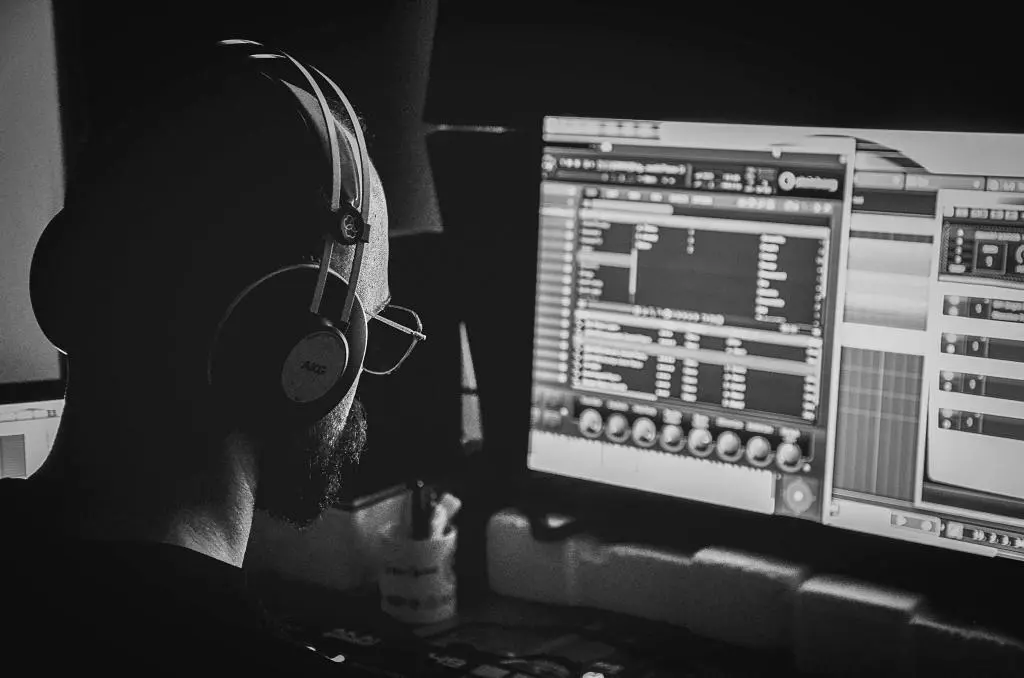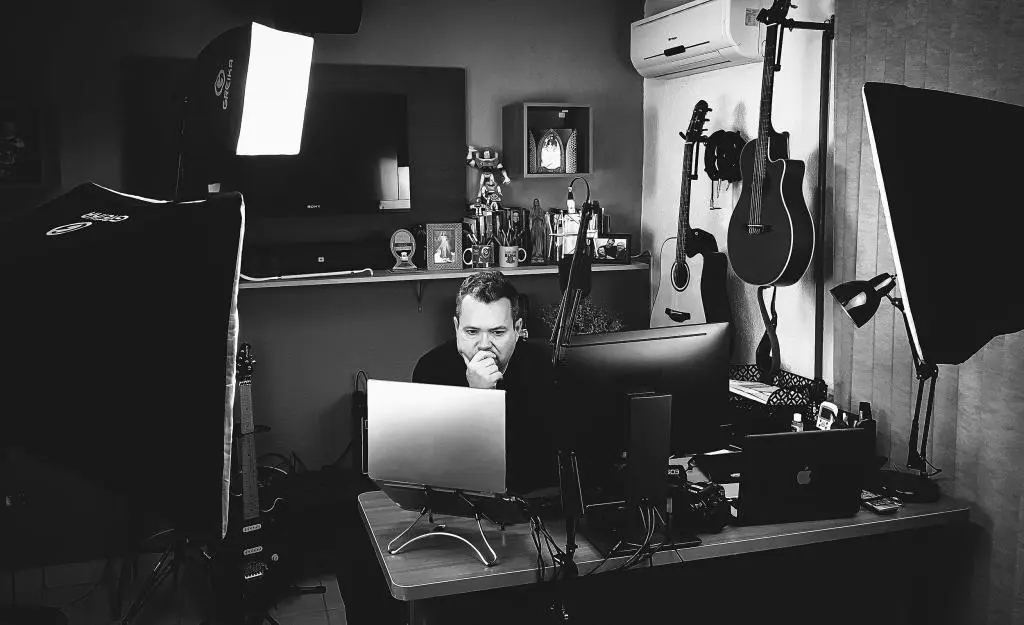Audio latency refers to a delay between when a sound enters your computer and when you hear it back. It is measured in milliseconds (ms). Latency can make recording and monitoring very difficult. The delayed feedback is disorienting for musicians. This article will explore how to lower latency for music production.

How to Lower Latency on PC: Table of Contents
Common Causes of High Latency
There are several culprits that introduce latency during recording:
- Audio interface – The analog-to-digital and digital-to-analog conversion process causes inherent latency. Interface buffers also delay the signal.
- Computer – An underpowered CPU and low RAM result in sluggish audio processing, increasing latency.
- DAW settings – An excessive buffer size and high sample rate lead to more latency.
- Too many plugins and tracks – This puts a heavy load on the CPU, leading to latency.
- Old cables and speakers – Faulty gear can potentially introduce latency.
Problems High Latency Causes
Excessive latency leads to major issues when recording and monitoring:
- Musicians can’t play in time with delayed monitoring. The lag is disorienting.
- Forces multiple recording takes to get the timing right, wasting time.
- Singers can’t properly pitch or emote with delayed voice playback.
Overall, high latency results in poorer recordings and frustrated musicians.
Benefits of Lowering Latency
Being able to record and monitor with low latency provides advantages:
- Musicians can nail the groove and feel when hearing themselves in real-time.
- Vocalists can pitch and emote accurately without delay.
- Saves time re-recording parts and improves workflow.
- Allows more plugins and tracks without latency problems.
Lowering latency leads to better performances and an optimized workflow.

Troubleshooting Audio Latency
Determining the source of latency is the first step to lowering it. Here are tips for troubleshooting where latency is coming from in your setup.
Check Computer Specs
Your computer’s CPU power and RAM capacity directly impact its ability to quickly process audio. Here are recommended minimum specs:
- CPU – An Intel Core i5 or equivalent processor. i7 or better is ideal.
- RAM – 8GB of RAM minimum. 16GB or more recommended.
If your computer is below these specs, upgrading will likely lower your latency. Faster processing means less delay.
Verify Audio Interface and Drivers
The audio interface itself can introduce latency during the conversion process. Try these troubleshooting tips:
- Ensure you are using the latest audio interface drivers from the manufacturer. Outdated drivers can increase latency.
- Check your interface’s latency specs. Under 5ms roundtrip latency is ideal.
- Use a Thunderbolt interface if possible, which offers lower latency than USB.
- Consider upgrading to a higher-end low-latency interface if needed.
Check DAW Settings
Buffer size and sample rate settings in your DAW impact latency significantly. Try these tweaks:
- Lower the buffer size incrementally until you get pops and clicks indicating it’s too low. Raise it slightly.
- 44.1-48kHz sample rate is best for limiting latency. Only use 96kHz+ if your system can handle it.
- Disable unnecessary DAW processing features that could add latency e.g. advanced audio stretching.
Verify Cables and Speakers
While less likely, bad cables and speakers can potentially introduce audible latency:
- Test headphones vs monitors. If latency is only in one, it points to a speaker/cable fault.
- Try swapping out interconnect and patch cables. Damaged cables increase latency.
- Inspect cables and speakers for any damage. Physically damaged gear often causes latency.
Identify Latency Culprits
Track down specific sources of latency in your project:
- Duplicate your session and start removing tracks one by one until latency decreases.
- Disable plugins on tracks individually to pinpoint problematic plugins causing latency.
- Freeze resource-intensive tracks and instruments to free up CPU processing power.
By isolating sources of latency, you can target your optimization efforts.
Troubleshooting will reveal exactly where audio latency is coming from in your setup. Address the culprits to significantly lower latency.

Reducing Latency in Your DAW
Optimizing your DAW settings is key to lowering latency during recording and mixing. Here are tips:
Lower the Buffer Size (Cautiously)
The buffer size determines how many audio samples your computer processes at once. A lower setting equals less latency.
However, an extremely low buffer taxes your CPU, potentially causing glitches, pops, and distortion. Find the sweet spot for your system.
Try buffer sizes between 64-256 samples. Lower it gradually until you get artifacts, then nudge it back up a bit.
Increase the Sample Rate
Higher sample rates like 96kHz capture audio in more detail. But watch your CPU usage, as higher sample rates increase latency.
44.1-48kHz is best if your system can’t handle 96kHz. Only use 96kHz if your CPU can take it without issue.
Use ASIO or Alternative Drivers (Windows)
On Windows, download ASIO4ALL drivers or use your audio interface’s native ASIO drivers.
ASIO provides lower latency performance compared to standard Windows audio drivers.
Freeze CPU-Intensive Tracks
Freezing tracks renders the audio, reducing CPU load. This allows lowering the buffer further without artifacts.
Freeze virtual instruments, tracks with heavy effects, and audio with transformations like pitch shifting.
Use Native Low Latency Monitoring
DAWs like Studio One provide near-zero latency monitoring without taxing your system. This separates playback and input processing.
Takes stress off your CPU so you can use lower buffer sizes.
Upgrade CPU and RAM
A faster CPU like an Intel i7 and 16GB+ RAM gives you more headroom to use lower buffer sizes without glitches.
Faster processing equals lower latency. Upgrade if needed and if your current system can’t handle low buffers.
Optimizing your DAW is crucial for reducing latency while recording and mixing music. Use these tips to lower latency.
Lower Latency in Your Audio Interface
Your audio interface itself can introduce latency during analog-to-digital conversion. Optimize interface settings to reduce delay:
Lower the Buffer Size
Just like in your DAW, a lower buffer size equals less latency. Reduce it gradually until you get distortion or pops.
Find the interface’s sweet spot – the lowest buffer before audio breakup occurs. This minimizes interface latency.
Use Direct/Zero Latency Monitoring
Enable direct monitoring if your interface offers it. This routes input signals directly to your headphones or monitors, bypassing the computer.
Zero latency monitoring avoids interface conversion delays, allowing you to hear live inputs in real-time.
Keep Your Drivers Updated
Outdated audio interface drivers can potentially introduce extra latency during A/D and D/A conversion.
Always use the latest drivers from the manufacturer to ensure efficiency and limit latency.
Use Thunderbolt Over USB Interfaces to Lower latency
Thunderbolt protocols offer lower latency performance compared to USB 2.0 or 3.0 interfaces.
But they cost more. Thunderbolt is the way to go if your computer supports it and you can afford it.
Dialing in your audio interface settings is crucial for reducing latency during recording and mixing. Aim for under 5ms roundtrip latency if possible.
Optimizing your interface lowers the baseline conversion and transmission latency significantly. Combine with DAW tweaks to minimize delay.
Understanding Buffer Size and Audio Latency
The buffer size has a major effect on audio latency. Here’s what you need to know:
What is Buffer Size?
The buffer size determines how many audio samples (pieces of data) your computer processes at once before outputting the audio.
A smaller buffer size means less latency, as it processes and outputs the audio faster.
Why Lower Buffer Isn’t Always Better
A very small buffer taxes your CPU more. Too low, and you get glitches, pops, and distortion as it can’t keep up.
Find the sweet spot – the smallest your system can handle before breakup occurs. This minimizes latency without overloading your CPU.
Measuring Latency from Buffer Size
You can calculate the latency for a given buffer size using this formula:
(Buffer Size / Sample Rate) x 1000 = Latency (ms)
For example, at 256 buffer and 44.1kHz sample rate:
(256 / 44100) x 1000 = 5.8 ms latency
Recommended Settings
For most systems:
- Buffer size: 64 – 256 samples
- Sample rate: 44.1 – 48kHz
Higher CPU power allows lower buffers and 96kHz sampling.
Understanding the relationship between buffer size, sample rate, and latency is key to optimizing your system’s latency performance. Use the smallest buffer possible without introducing artifacts or glitches.
Additional Tips for Lower Latency
Beyond core audio settings, try these additional tricks:
Close Other Programs
Background programs competing for CPU resources can indirectly increase latency. Close any non-essential software when recording/mixing.
Optimize Your Computer for Audio
Tweak Windows or Mac settings for optimal audio performance:
- Adjust power settings to maximize performance when plugged in.
- Disable unnecessary visual effects and animations.
- Set your antivirus to ignore your audio folders.
Use Fewer Plugins and Tracks
Too many tracks and plugins overload your CPU, forcing you to increase buffer size. Use only what you need.
Also try busing tracks together to use less effects. Reduce track counts.
Upgrade Faulty Equipment
As mentioned earlier, faulty cables or audio interfaces can introduce latency.
Replace damaged cables, speakers, or outdated interfaces if needed.
Reboot Computer and Interface
Restart your computer and power cycle audio interfaces before recording to clear memory and ensure optimum performance.
Enable Dropout Protection
DAWs like Ableton Live include dropout protection which helps maintain low latency during CPU spikes.
This minimizes the need to increase buffer size. Enable it if available.
Try these additional tips alongside your core optimization efforts to further reduce audio latency.

